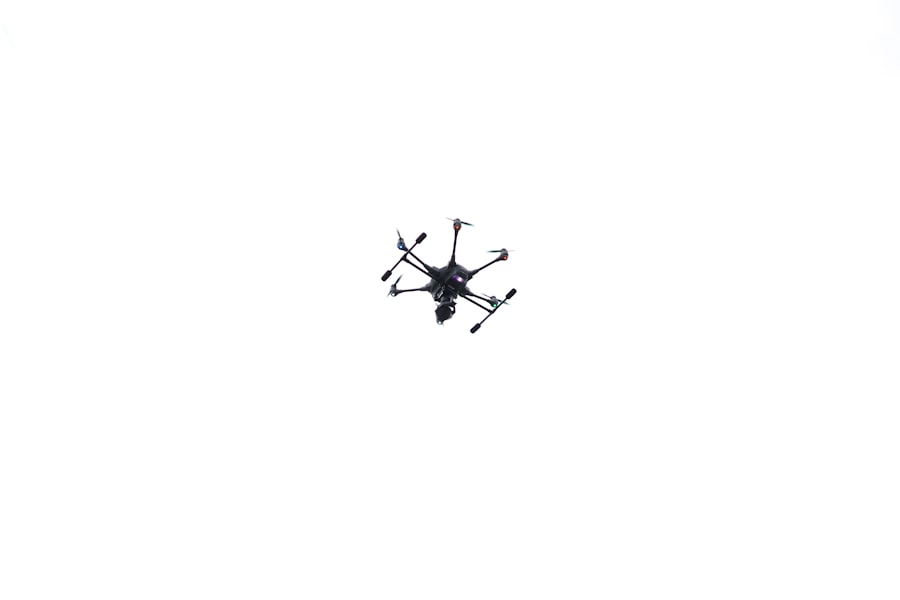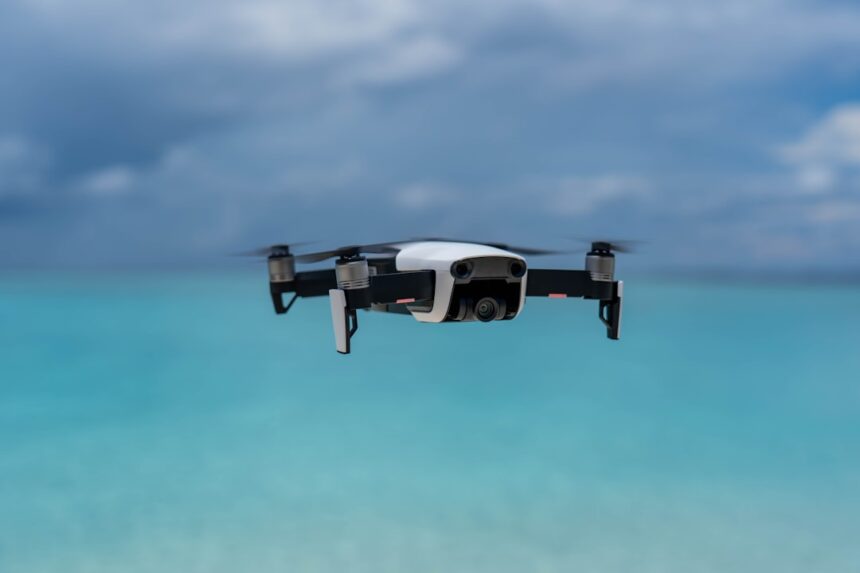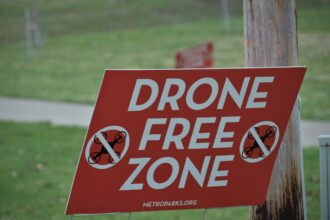Drone technology has emerged as a transformative force in various sectors, particularly in military applications. Initially developed for reconnaissance and surveillance, drones have evolved into sophisticated tools capable of executing complex missions with precision.
The integration of advanced technologies such as artificial intelligence, machine learning, and enhanced sensor capabilities has further expanded the operational scope of drones, making them indispensable in modern warfare. The proliferation of drone technology has not only changed the dynamics of military engagements but has also sparked debates about its implications for international security and ethics. As nations invest heavily in drone capabilities, the potential for their use in conflict scenarios raises questions about accountability, legality, and the moral ramifications of remote warfare.
The increasing reliance on drones signifies a shift in how wars are fought, with implications that extend beyond the battlefield and into the realms of policy and public perception.
Key Takeaways
- Drone technology has evolved significantly and is now widely used in modern conflict.
- Drones offer advantages such as precision strikes, reduced risk to military personnel, and enhanced intelligence gathering capabilities.
- Ethical and legal considerations surrounding drone warfare include concerns about civilian casualties and the violation of sovereignty.
- Various types of drones are used in modern conflict, including reconnaissance drones, armed drones, and stealth drones.
- Drones play a crucial role in intelligence gathering, providing real-time information and surveillance capabilities.
- The controversy surrounding drone strikes revolves around targeted killing and the potential for civilian casualties.
- Countermeasures and defense against drones are being developed to mitigate the threat they pose in warfare.
- The future of drone technology in warfare is likely to involve advancements in autonomy, stealth, and swarm capabilities.
- Drones have had a significant impact on modern conflict, changing the nature of warfare and raising ethical and legal concerns.
- The pros and cons of drone technology in warfare must be carefully considered to weigh the benefits against the potential risks and consequences.
The Evolution of Drones in Modern Conflict
The evolution of drones in modern conflict can be traced back to their early use during World War I, where they were primarily employed for target practice. However, it was not until the late 20th century that drones began to take on a more significant role in military operations. The Gulf War marked a pivotal moment in this evolution, as the United States utilized drones for reconnaissance missions, providing real-time intelligence that proved invaluable for ground forces.
This initial success laid the groundwork for further advancements in drone technology, leading to their widespread adoption in subsequent conflicts. In the years following the Gulf War, drones underwent rapid technological advancements, transitioning from simple surveillance tools to sophisticated platforms capable of carrying out precision strikes. The introduction of armed drones, such as the Predator and Reaper, revolutionized military strategy by allowing forces to engage targets without risking pilot lives.
This shift not only enhanced operational efficiency but also changed the nature of warfare itself, as conflicts became increasingly characterized by remote engagements rather than traditional ground battles.
Advantages of Using Drones in Warfare

The advantages of using drones in warfare are manifold, contributing to their growing prominence on the battlefield. One of the most significant benefits is their ability to conduct surveillance and reconnaissance missions with minimal risk to human life. Drones can fly at high altitudes and cover vast areas, providing commanders with real-time intelligence that is crucial for informed decision-making.
This capability allows military forces to monitor enemy movements and gather critical information without exposing personnel to danger. Moreover, drones offer a level of precision that is often unattainable with conventional weapons systems. Armed drones can strike specific targets with remarkable accuracy, reducing collateral damage and minimizing civilian casualties.
This precision is particularly important in urban warfare scenarios, where distinguishing between combatants and non-combatants can be challenging. The ability to conduct targeted strikes while mitigating unintended harm has made drones an attractive option for military planners seeking to achieve strategic objectives without inciting widespread backlash.
Ethical and Legal Considerations of Drone Warfare
| Consideration | Details |
|---|---|
| International Law | Adherence to international laws and treaties such as the Geneva Conventions and the UN Charter. |
| Civilian Casualties | Evaluating the impact of drone strikes on civilian populations and minimizing collateral damage. |
| Targeted Killings | Legal and ethical implications of targeted killings and extrajudicial executions. |
| Privacy Concerns | Respecting the privacy rights of individuals when conducting surveillance with drones. |
| Accountability | Ensuring transparency and accountability for drone operations and decision-making processes. |
Despite the advantages that drones offer, their use in warfare raises significant ethical and legal considerations. One of the primary concerns is the potential for dehumanization in combat. The distance between operators and targets can create a psychological disconnect, leading to a perception that drone strikes are less consequential than traditional warfare.
This detachment may result in a lower threshold for engaging in lethal actions, raising questions about accountability and the moral implications of remote killing. Additionally, the legality of drone strikes under international law remains a contentious issue.
The lack of transparency surrounding drone operations further complicates matters, as it can be difficult to ascertain whether strikes are justified or if they adhere to legal standards. As nations continue to develop and deploy drone technology, establishing clear legal frameworks and ethical guidelines will be essential to address these concerns.
Types of Drones Used in Modern Conflict
The types of drones used in modern conflict vary widely, each designed for specific operational roles and missions. Reconnaissance drones, such as the Global Hawk, are equipped with advanced sensors and cameras that enable them to gather intelligence over vast distances. These UAVs play a crucial role in surveillance operations, providing commanders with real-time data on enemy movements and battlefield conditions.
On the other hand, combat drones like the MQ-9 Reaper are designed for offensive operations. These armed UAVs can carry precision-guided munitions and conduct targeted strikes against enemy positions or high-value targets. The versatility of combat drones allows them to be deployed in various scenarios, from counterterrorism operations to conventional warfare.
Additionally, there are also smaller tactical drones used by ground forces for close air support and reconnaissance, further diversifying the range of capabilities available to military planners.
The Role of Drones in Intelligence Gathering

Drones have become integral to intelligence gathering in modern conflict, providing militaries with unprecedented access to real-time information. Their ability to loiter over target areas for extended periods allows for continuous surveillance, enabling operators to monitor enemy activities and assess battlefield dynamics without risking personnel. This capability is particularly valuable in asymmetric warfare scenarios where traditional intelligence-gathering methods may be compromised or ineffective.
Furthermore, advancements in sensor technology have enhanced the quality and scope of data collected by drones. High-resolution cameras, infrared sensors, and signals intelligence capabilities enable operators to gather comprehensive information about enemy positions, movements, and communications. This wealth of data can be analyzed to inform strategic decisions and operational planning, ultimately improving mission outcomes and increasing situational awareness on the battlefield.
Targeted Killing and the Controversy Surrounding Drone Strikes
One of the most controversial aspects of drone warfare is the practice of targeted killing. Armed drones have been employed to eliminate high-value targets, including terrorist leaders and insurgents, often without due process or judicial oversight. Proponents argue that targeted strikes are necessary for national security and can prevent imminent threats; however, critics contend that such actions violate international law and undermine the principles of justice.
The controversy surrounding targeted killings is compounded by concerns about collateral damage and civilian casualties. While drones are designed for precision strikes, miscalculations can lead to unintended harm to non-combatants. High-profile incidents involving civilian deaths have sparked outrage and fueled anti-American sentiment in regions where drone strikes occur.
As a result, the ethical implications of targeted killings continue to be a focal point of debate among policymakers, legal experts, and human rights advocates.
Countermeasures and Defense against Drones
As drone technology continues to advance, so too do efforts to develop countermeasures against them. Military forces around the world are investing in various strategies to detect and neutralize hostile drones that pose threats to national security. These countermeasures range from electronic warfare systems designed to jam drone communications to kinetic solutions such as anti-drone missiles or laser systems capable of disabling UAVs mid-flight.
The proliferation of commercial drones has also led to increased concerns about their potential use by non-state actors for malicious purposes. As a result, governments are exploring innovative approaches to safeguard critical infrastructure and urban areas from drone threats. This includes deploying radar systems capable of detecting small UAVs and developing protocols for intercepting unauthorized drone flights.
The ongoing arms race between drone technology and counter-drone measures underscores the need for continuous adaptation in military strategies.
The Future of Drone Technology in Warfare
The future of drone technology in warfare is poised for further innovation as advancements continue at a rapid pace. Emerging technologies such as artificial intelligence and machine learning are expected to enhance drone capabilities significantly. Autonomous drones capable of making real-time decisions could revolutionize military operations by reducing response times and increasing operational efficiency.
Moreover, the integration of swarming technology—where multiple drones operate collaboratively—holds promise for future combat scenarios. Swarm tactics could overwhelm enemy defenses through coordinated attacks or provide comprehensive surveillance coverage over vast areas. As nations invest in research and development, the potential applications for drone technology will likely expand beyond traditional military uses into areas such as logistics support and humanitarian assistance.
The Impact of Drones on Modern Conflict
The impact of drones on modern conflict is profound, reshaping how wars are fought and altering strategic calculations for military planners worldwide. The ability to conduct remote operations has changed the nature of engagement, allowing forces to strike with precision while minimizing risks to personnel. This shift has led to an increased reliance on air power over ground forces in certain conflicts, fundamentally altering traditional military doctrines.
However, the rise of drone warfare also presents challenges that extend beyond tactical advantages. The normalization of remote killing raises ethical questions about accountability and oversight in military operations. Additionally, as more nations acquire drone technology, there is a risk of escalation in conflicts where UAVs are deployed indiscriminately or without regard for international norms.
The long-term implications of this shift will continue to shape global security dynamics for years to come.
The Pros and Cons of Drone Technology in Warfare
In conclusion, drone technology represents both significant advantages and considerable challenges within the context of modern warfare. On one hand, drones offer unparalleled capabilities for surveillance, precision strikes, and intelligence gathering while reducing risks to personnel. Their effectiveness has transformed military strategies and operational planning across various conflict scenarios.
On the other hand, ethical dilemmas surrounding targeted killings, civilian casualties, and legal accountability cannot be overlooked. As nations navigate the complexities associated with drone warfare, establishing clear guidelines and frameworks will be essential to ensure responsible use while addressing concerns about sovereignty and human rights violations. Ultimately, the future trajectory of drone technology will depend on how these challenges are managed alongside its undeniable benefits in contemporary conflict settings.
Drone technology has become a pivotal element in modern conflicts, offering unprecedented capabilities in surveillance, reconnaissance, and targeted strikes. The integration of drones into military operations has transformed the battlefield, providing real-time data and reducing the risk to human soldiers. For a deeper understanding of how drone technology is reshaping warfare, you can explore a related article on this topic by visiting In The War Room. This resource delves into the strategic implications and ethical considerations of deploying drones in contemporary military engagements.
FAQs
What is drone technology?
Drone technology refers to the use of unmanned aerial vehicles (UAVs) or unmanned aircraft systems (UAS) to perform various tasks, including surveillance, reconnaissance, and targeted strikes.
How is drone technology used in modern conflicts?
In modern conflicts, drone technology is used for intelligence gathering, surveillance, and targeted strikes against enemy targets. Drones can provide real-time information to military commanders and can be used to carry out precision strikes with minimal collateral damage.
What are the advantages of using drones in modern conflicts?
The use of drones in modern conflicts offers several advantages, including the ability to gather intelligence without putting human lives at risk, the capability to conduct precision strikes with minimal collateral damage, and the ability to operate in remote or hostile environments.
What are the ethical considerations surrounding the use of drones in modern conflicts?
The use of drones in modern conflicts raises ethical considerations related to civilian casualties, the potential for misuse or abuse of the technology, and the psychological impact on drone operators. There is ongoing debate about the ethical implications of using drones in warfare.
What are the limitations of drone technology in modern conflicts?
Some limitations of drone technology in modern conflicts include the potential for technological malfunctions, the risk of enemy countermeasures, and the ethical and legal challenges associated with targeted strikes and civilian casualties. Additionally, drones may have limited endurance and payload capacity compared to manned aircraft.




